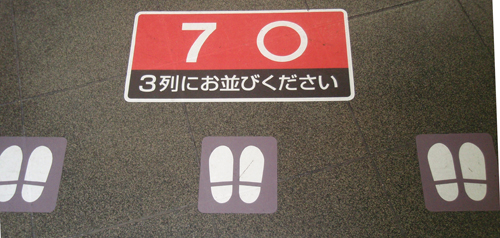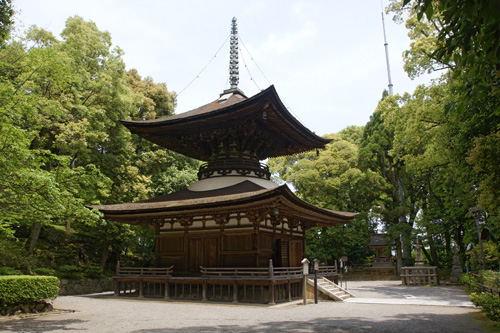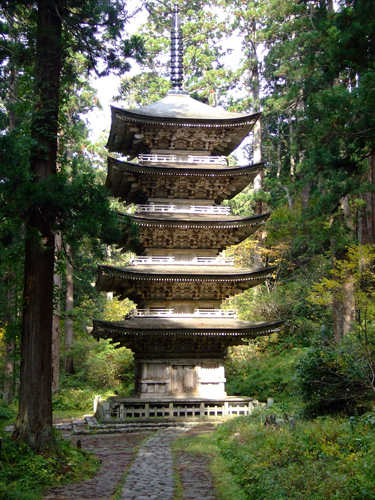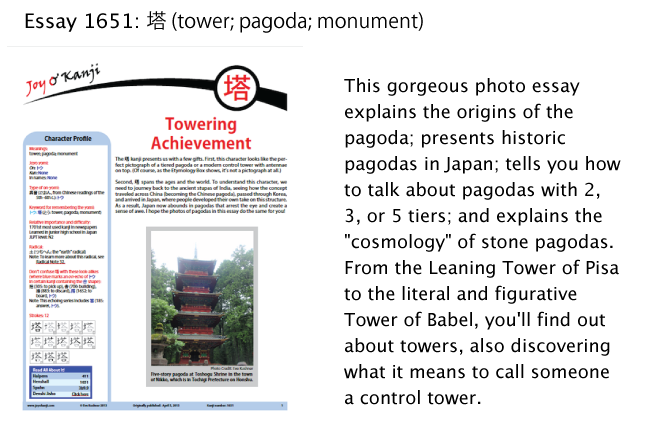From Pagodas to Elephants
Lately I've had to confront the same fear again and again. With essay 1280 on 魂 (soul, spirit) and then essay 1651 on 塔 (tower; pagoda; monument), I've needed to write quite a bit about Buddhism. What a complicated religion! Even Japanese people seem confused by some of the rituals and beliefs. I don't have a prayer (so to speak!) of understanding much, particularly the differences between the sects.
On top of that, comprehending Buddhism means grasping ideas and words that traveled from India through China, through Korea, and finally to Japan! Even the concept of the pagoda (originally the stupa) followed this route, as did the word for that structure.
That happened about 1,500 years ago. One might assume that there would be little ancient Indian influence in Japan today. But that's not correct. When I visited last summer and asked my proofreader what one stone monument at a temple said, he stared at it for awhile and said that he had no idea, as it was in Sanskrit.
Through essay 1651, I learned about wooden tablets that the Japanese place behind graves. Using sumi ink, Buddhist priests inscribe these tablets in Japanese—and in Sanskrit! In the photo below, the Sanskrit is visible at the very top, but it's much more apparent on other tablets.
In most ways, India and Japan feel like polar opposites. One country overflows with colorful chaos, whereas the other is hyper-organized. Here's what I mean:

Photo Credit: Tom1cruz

Photo Credit: Eve Kushner
Sign on a train station platform in Osaka. Here's what it says:
3列にお並びください
Please form 3 lines.
列 (れつ: column, file, row); 並ぶ (ならぶ: to stand in a line)
Given these immense differences and the way some key concepts and words have been refracted through so many cultures over the millennia, it's difficult for those of us who are neither Japanese nor Indian to feel that we can have a firm foothold. But recently several things have made these cultural exchanges more enjoyable for me.
• The pagoda essay brought me into contact with incredibly beautiful architecture that Japan wouldn't have, if not for India and China. In the essay I wrote about all these pagodas and many more:

Photo Credit: 663highland
Pagoda at Ishiyama-dera Temple, a Buddhist temple in the city of Otsu in Shiga Prefecture on Honshu. Built in 1194, the pagoda has been declared a national treasure.

Photo Credit: Urashimataro
Pagoda among cherry blossoms at Ankokuron-ji Temple in Kamakura, which is in Kanagawa Prefecture on Honshu.

Photo Credit: Geomr
A five-tiered pagoda at the base of Mount Haguro in Yamagata Prefecture on Honshu.

Photo Credit: 663highland
Pagoda at Ichijo-ji Temple, which is in the city of Kasai in Hyogo Prefecture on Honshu. Built in 1171, this three-story pagoda has been designated a national treasure.
• My yoga teacher recently asked me what the kanji for "mindfulness" would be. She said she read something about a Chinese character with "heart" on the bottom" and "in the present moment" on top. Hmm, what could it be?!
I first thought of 意 (mind, heart, thoughts, feelings; mind; intention; meaning), a kanji I've long declared my favorite. Had I ever looked up its etymology?! Maybe not! Henshall has a bit to say about the etymology, but the simplest theory is that this character combines "heart" (心) with "sound" (音) and that thoughts are the "sounds" of the heart! Now I love 意 even more!
But this was not in fact the character she sought. Further discussions led me to realize that she wanted 念. That fit the bill, as 今 means "now" in Japanese and in Chinese.
I associate 念 with 記念日 (きねんび: anniversary) and 残念ながら (ざんねんながら: unfortunately) and had never heard of it in connection with mindfulness. However, Breen defines 念 this way: (1) sense; idea; thought; feeling; (2) desire; concern; (3) attention; care. Those third definitions seem as if they could pertain to mindfulness.
Looking at Breen's 念 compounds, I found several words with two "personalities"—a secular side and a Buddhist side:
一念 (いちねん): (1) determined purpose; (2) {Buddh} an incredibly short span of time (i.e., the time occupied by a single thought); (3) {Buddh} a single repetition of a prayer (esp. in Jodo-shu)
観念 (かんねん): (1) idea; notion; conception; (2) sense (e.g., of duty); (3) resignation; preparedness; acceptance; (4) {Buddh} observation and contemplation
無念 (むねん): (1) chagrin; regret; (2) {Buddh} free from obstructive thoughts
All the definitions marked "{Buddh}" seem to change the flavor of each word from grounded to esoteric. It's as if 念 has a regular day-to-day persona, making the rounds in words that everyone uses but then puts on a different face in a Buddhist context. Simply by coming into contact with the definitions marked "{Buddh}," I feel as though I'm pulling aside a curtain and finding the back room of a temple in which mysterious things occur under clouds of incense smoke.
Just as yoga has come into my life from ancient India, so have the Buddhist ideas that inspire my teacher. The words and concepts may have undergone lots of transformations by the time they ended up in Breen's dictionary, but knowing Japanese gives us at least some access to them.
• Finally, thanks to an April 2 NHK article, I found out about an elephant that can draw kanji. The article link no longer works, strangely enough, but here was the text:
A zoo in Japan held a Shinto ritual on Tuesday to wish for an elephant's easy childbirth.
The 22-year-old female Asian elephant at the zoo in Chiba Prefecture, near Tokyo, is expecting her second child in September. She gave birth to her first 6 years ago.
After a Shinto priest purified the elephant, zoo keepers, in line with an old Japanese tradition for safe birth, put two 5-meter-long white cloth sheets around her body.
Afterwards, the elephant's first child, a daughter, held a writing brush with her trunk and wrote two Japanese 'kanji' characters meaning "easy birth" on a large board.
Zoo officials said the daughter elephant practiced writing the characters for a week.
Zoo officials said the present weight of the newborn baby is estimated at around 40 kilograms and is expected to increase to almost 100 kilograms. It will be the 7th baby of an Asian elephant born in Japan.
Sayuri Sakamoto, the head of the zoo, says both the mother and expected child are in good condition. She says she hopes a lovely baby will be born in good health.
Apparently, elephants in Japan know kanji!!! Unbelievable! I wonder which characters she would choose if left to her own devices.
The elephant in the article is an Asian elephant, which may mean that she's from India. (Other possibilities include Sumatra and Sri Lanka.) All that cross-cultural hybridization has brought us an elephant who can draw kanji, and nothing could make me happier than that!
Well, one other thing has also made me very happy—a wonderful new film from Ghibli Studios. It was actually released in Japanese in 2011, but the English version is just now making its debut. The English title is From Up on Poppy Hill. The Japanese title is コクリコ坂から, where コクリコ means "red poppy" and 坂 (hill) is voiced as ざか.
The movie transported me to the kind of Japan I love—the kind with narrow streets packed with charming, old architecture.
I saw a dubbed version, and it felt rather strange to see a movie so clearly set in Japan but without any audible Japanese. Nevertheless, kanji signs abounded, and what a moving target they proved to be! It was quite a challenge to read characters that flitted on and off the screen a little too quickly for me to make sense of them. I initially felt frustrated by this, and then I just decided to let go and marvel at the beauty of the characters. Amazingly, that proved quite fulfilling!
Here's a preview of the new essay on 塔:

Have a great weekend!


Comments